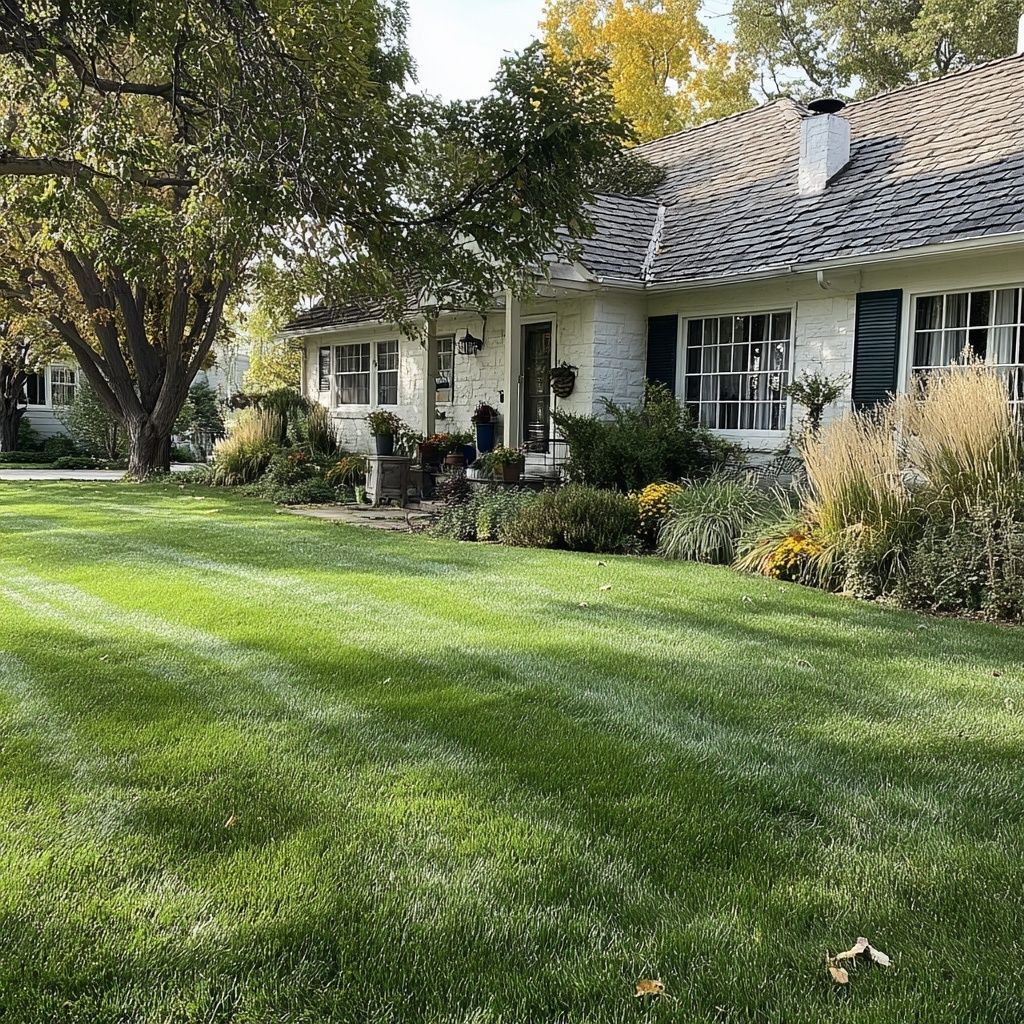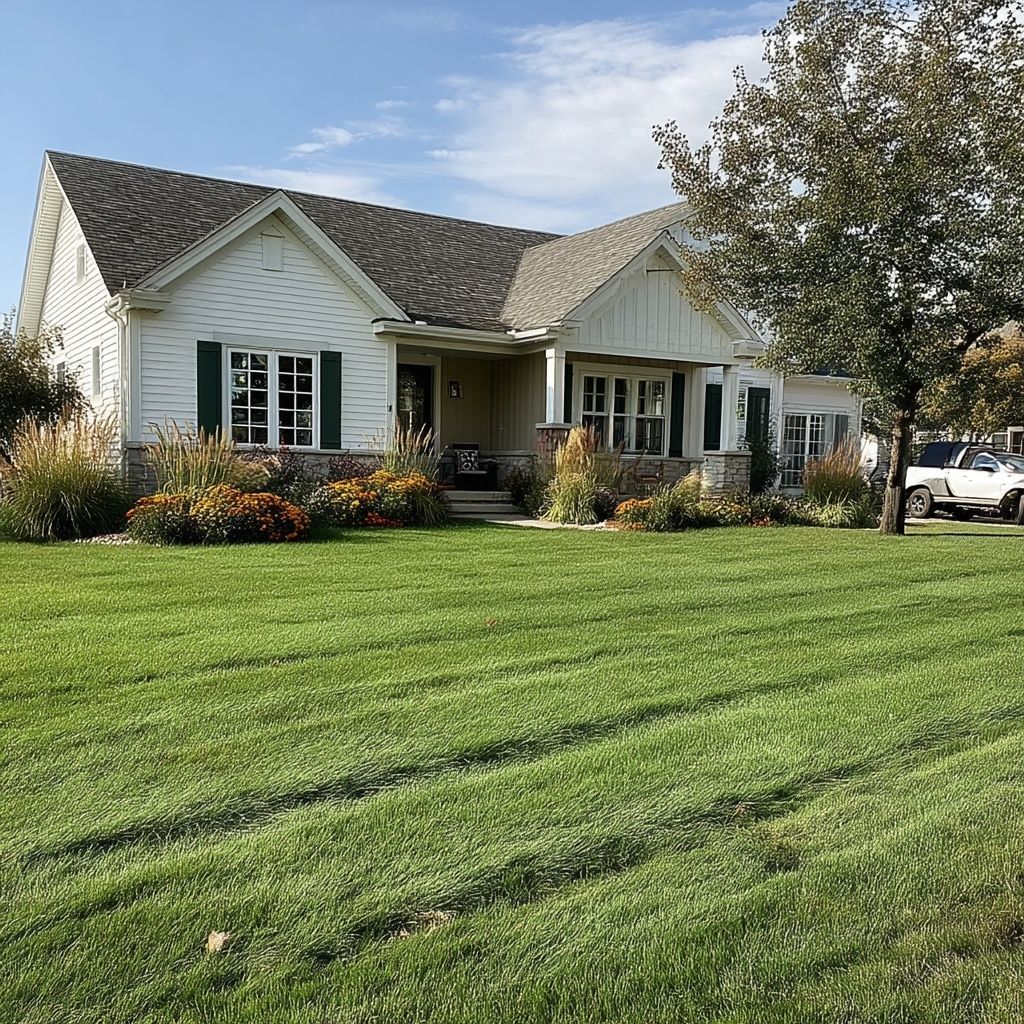Seasonal Fertilization Plans That Work for Edina Lawns
A Year-Round Approach to a Healthier Lawn
If you want a truly great lawn in Edina, you have to think past the quick results. I’ve seen homeowners throw down fertilizer in May, see a burst of color, and think they’re done. But lawns don’t work that way in Minnesota. Our freeze-thaw cycles, heavy clay soils, and long dormant periods all mean your yard needs a plan that evolves through the seasons.
That’s the key: timing. Fertilization isn’t about dumping nutrients into the ground—it’s about working with the soil at the right time of year so your grass can actually use what you’re giving it. Combine that with a little topdressing and aeration at the right moments, and your lawn starts performing like it’s supposed to: smooth, firm underfoot, and rich green without the patchy look that shows up in so many Edina neighborhoods.
Here’s how I structure it: spring recovery, summer maintenance, and fall preparation. Each step builds on the last. When done right, you can stand on that lawn in July and actually feel the difference.
Spring: Wake the Lawn Without Shocking It
Spring is where most people go wrong because they rush. After winter, the soil’s still cold and compacted. If you fertilize too early, the grass can’t absorb it and you just end up washing nutrients into storm drains. That’s money—and effort—wasted.
I tell clients to start with a soil temperature check. Once we’re consistently around 55°F, that’s when the grass wakes up. The roots start growing before the blades do, and that’s your window. A slow-release nitrogen fertilizer at this stage helps build strength, not just color.
Spring is also the perfect time to pair fertilization with aeration and topdressing. Aeration opens up those compacted clay soils you’ll find all over Edina—especially in older neighborhoods like Morningside and near Minnehaha Creek. Topdressing afterward fills in bumps with a light layer of sandy topsoil that improves drainage and firmness. It’s one of the most overlooked steps in lawn care, but it makes a massive difference in how your lawn feels underfoot.
Pro Tip: Don’t skip the pre-emergent. Crabgrass and other weeds start early, and if you wait until you see them, it’s already too late. Apply a crabgrass preventer right after your first mow.

Summer: Keep It Green Without Overdoing It
By mid-summer, lawns in Edina are under stress. Between the heat, the clay soil that holds water too long, and the neighborhood sprinkler schedules, your lawn can easily swing between soggy and bone-dry. This is where balance comes in.
I use a lighter, mid-season feeding that keeps the grass healthy without forcing rapid growth. Too much nitrogen this time of year pushes shallow roots, and those roots can’t handle the late-summer heat. A balanced fertilizer—something with moderate nitrogen and a little potassium—helps strengthen roots and improve stress tolerance.
You’ll also want to keep an eye on how the lawn feels when you walk on it. Soft, spongy spots can mean overwatering or poor drainage. Hard, brittle areas usually need aeration or more organic material. In both cases, compost-based topdressing can help even things out.
This is also the time to spot-treat weeds rather than going nuclear with herbicides. I’ve seen too many lawns burn out from aggressive chemical use in July. Instead, hand-pull or spot-spray while maintaining healthy turf density. The thicker your grass, the fewer weeds get through.
Pro Tip: If you water, do it deep and infrequent—twice a week, early morning, for about an inch total. Shallow watering just keeps the roots near the surface, which makes them weak.
Fall: Build Strength for Next Year
If I had to pick one season that matters most for Edina lawns, it’s fall. What you do from mid-September through October determines how your lawn looks next spring. The goal here isn’t color—it’s root development.
Cool-season grasses love fall weather. The soil stays warm while the air cools, giving roots perfect growing conditions. This is when I go heavier on the fertilization, using a high-nitrogen blend to fuel root growth and repair summer stress. It’s also prime time for aeration and overseeding. The new seed takes advantage of loosened soil and mild weather to establish before winter.
I like to topdress again at this stage, especially in high-traffic lawns. That sandy topsoil layer not only helps smooth out bumps but also protects new seedlings and enhances drainage before the snow sets in.
If you’ve had problems with patchy color, thin grass near shaded areas, or soggy spots after storms, this is the time to address them. A well-aerated, properly fertilized fall lawn holds up through winter far better and greens up faster come spring.
Pro Tip: Skip the late-winter fertilizer ads—they’re usually just selling you extra product. A strong fall feeding will carry your lawn through winter without needing a February boost.

The Long Game: Why Topdressing Ties It All Together
Topdressing is the quiet hero of a great fertilization plan. It’s not flashy, and most people don’t notice it happening, but it’s what makes every other lawn treatment work better. By adding a thin layer of sandy topsoil or compost over time, you’re improving the soil profile. That means fewer drainage problems, fewer bumps, and stronger root systems.
In Edina’s clay-heavy lawns, this is huge. Clay holds water too long and limits oxygen. A little topdressing every year slowly changes that balance, creating better soil structure for roots and microorganisms to thrive. When paired with smart fertilization, it’s what separates a “nice” lawn from one that looks like it belongs on a golf course.
And the beauty of this approach is that it’s cumulative. You don’t need to overhaul your lawn every year—you just keep improving it bit by bit. Over a few seasons, that adds up to a smoother, firmer, more resilient surface that looks great from April through November.
Pro Tip: Topdressing after aeration is ideal because the material falls into the holes, creating micro-reservoirs for air and water where the roots need it most.
FAQs
How often should I fertilize my Edina lawn?
I recommend three main applications each year—spring, mid-summer, and fall. Each one has a different purpose: recovery, maintenance, and preparation. Spring builds strength, summer sustains color, and fall sets up root health for next year. You can add a light fourth treatment if your lawn gets heavy use, but it’s better to focus on quality fertilizer and timing than on frequency.
Is topdressing really necessary every year?
If you’re dealing with clay soil like most of Edina, yes. Even a thin topdressing layer once a year helps break up compaction, improve drainage, and level uneven spots. It’s not a gimmick—it’s slow, lasting soil improvement. Think of it as conditioning your lawn from the inside out. Over a few years, it pays off in fewer drainage problems and a smoother, denser lawn.
What kind of fertilizer should I use in each season?
In spring, go for a slow-release nitrogen fertilizer to encourage steady root growth. Mid-summer needs a balanced formula that won’t push too much top growth, and fall should focus on higher nitrogen to strengthen roots. The key is matching the nutrient profile to what your grass is doing at that time of year—not just grabbing whatever’s on sale.
When should I combine aeration and overseeding?
Fall is the best time. The cooler temps help new seed establish without the stress of summer heat, and aeration gives it a place to settle. If your lawn is thin or patchy, pair aeration with overseeding and a light topdressing to create the ideal environment for germination. Spring overseeding can work, but it competes with weed control efforts.
How long before I’ll see real improvement?
Usually within one full growing season, but the best results build over time. By the end of the first year, most lawns look noticeably healthier. By the second or third, you’ll feel the difference walking on it—firmer underfoot, fewer muddy spots, more consistent color. It’s a process, but it’s one that pays off every season after.










